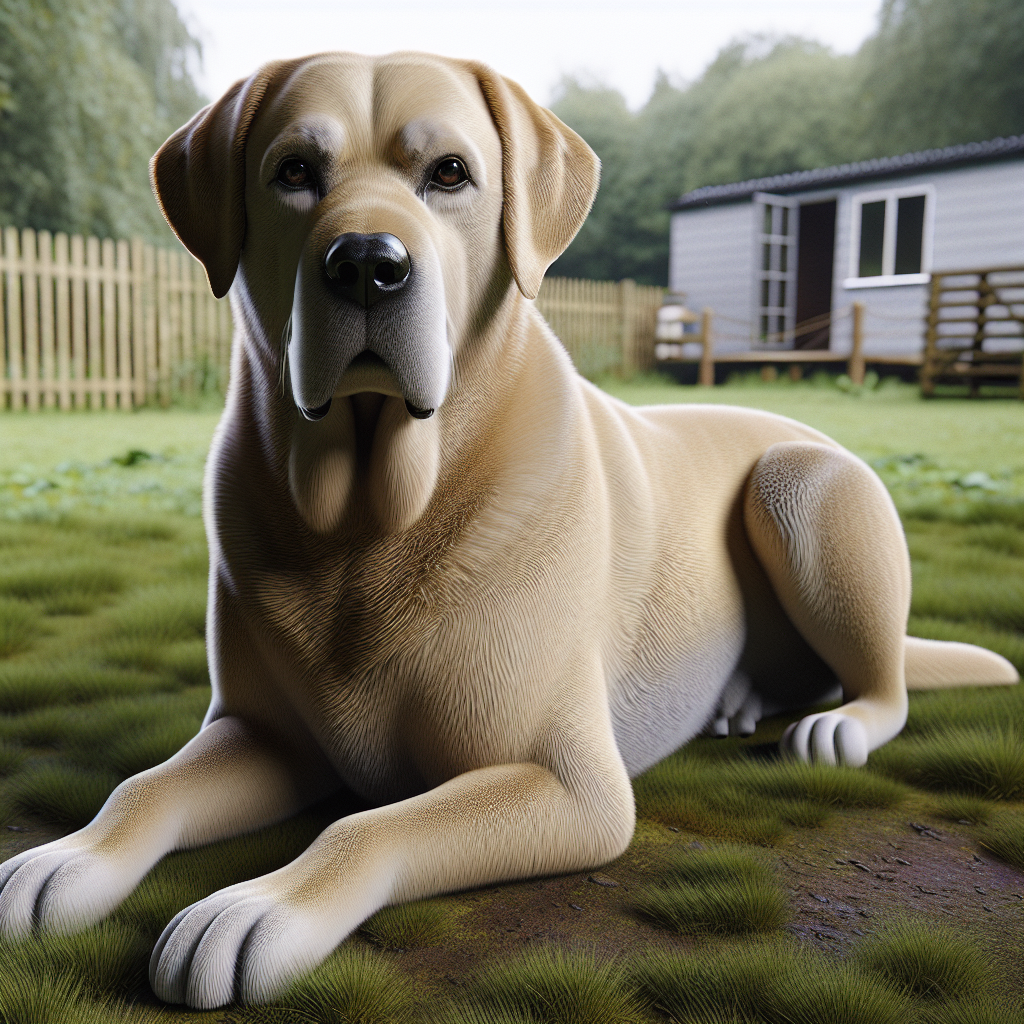Introduction to Dog Fleas

Dog fleas are a common nuisance for pet owners and a persistent problem for our canine companions. A flea is a small, wingless insect that thrives by feeding on the blood of its hosts. In the case of dog fleas, their preferred hosts are dogs, although they can also bite humans and other animals. Understanding dog fleas involves recognizing their impact on pet health and how they can lead to discomfort and disease if left unchecked.
Definition and Overview
Dog fleas, scientifically known as Ctenocephalides canis, are external parasites that live on the skin of dogs. These tiny insects are adept at jumping and can easily move from one host to another, making them highly contagious among pets. Fleas survive by consuming the blood of their hosts, which can lead to a variety of health issues for dogs, ranging from mild irritation to serious skin infections.
Common Types of Fleas Affecting Dogs
While Ctenocephalides canis is specifically referred to as the dog flea, another common flea that often affects dogs is the cat flea, Ctenocephalides felis. Despite its name, the cat flea is more prevalent and is the primary flea species found on dogs in many regions. Both types of fleas can cause similar symptoms and require similar methods for control and prevention.
Identifying Fleas on Dogs
Recognizing a flea infestation on a dog can be challenging due to the flea’s small size and rapid movement. However, there are telltale signs and symptoms that can help pet owners identify the presence of these pesky parasites.
Physical Characteristics of Fleas
Fleas are tiny, dark brown insects, typically measuring about 1/16 to 1/8 inch in length. They have flat bodies that allow them to navigate through the fur of their host with ease. Their hind legs are powerful, enabling them to jump impressive distances, which is how they move from one host to another. Observing these physical traits can help in identifying fleas on a dog.
Signs and Symptoms of Flea Infestation
Dogs suffering from a flea infestation often exhibit symptoms such as excessive scratching, biting, or licking of their fur. Flea bites can cause intense itching and irritation, leading to red, inflamed skin. In severe cases, dogs may develop bald patches or sores from persistent scratching. Flea dirt, which looks like tiny black specks, can often be found in a dog’s coat and is another indicator of an infestation.
Life Cycle of Dog Fleas
Understanding the life cycle of dog fleas is crucial for effectively controlling and preventing infestations. Fleas undergo a complete metamorphosis, and their life cycle consists of four stages: egg, larva, pupa, and adult.
Stages of Flea Development
Fleas begin their life as eggs, which are laid on the host but often fall off into the environment. These eggs hatch into larvae, which feed on organic debris, including flea dirt. The larvae then spin cocoons and enter the pupal stage. Within this protective casing, they develop into adult fleas. Adult fleas emerge from the cocoon when they sense a host is nearby, allowing them to jump onto the dog and start the cycle anew.
How Fleas Reproduce and Spread
Fleas are prolific breeders; a single female flea can lay up to 50 eggs per day. The rapid reproduction rate of dog fleas means that a small infestation can quickly become a large one if not addressed. Fleas spread easily through direct contact between animals or by infesting environments where pets frequent, such as homes, yards, and kennels.
Causes and Sources of Flea Infestations
Flea infestations can occur for a variety of reasons, and understanding these causes is key to preventing them.
Common Ways Dogs Get Fleas
Dogs can pick up fleas through several common scenarios. Direct contact with an infected animal is a primary way fleas are transferred. Fleas can also jump onto dogs from infested environments, such as grassy areas, parks, and grooming facilities. Even indoor dogs are not immune, as fleas can be brought inside on clothing or other animals.
Environmental Factors Contributing to Flea Presence
Certain environmental conditions can exacerbate flea problems. Warm, humid climates provide ideal conditions for flea reproduction and survival. Additionally, environments with a lot of wildlife or stray animals can serve as reservoirs for fleas, increasing the likelihood of infestations in pets.
Impact of Fleas on Dog Health
Fleas are not just a nuisance; they pose significant health risks to dogs. The impact of a flea infestation can range from mild irritation to severe health complications.
Health Problems Associated with Fleas
The most immediate effect of flea bites is skin irritation and itching. However, some dogs may develop flea allergy dermatitis, an allergic reaction to flea saliva that causes severe itching and skin inflammation. In young or small dogs, heavy infestations can lead to anemia due to blood loss. Fleas can also act as vectors for diseases, transmitting bacteria like Bartonella, which causes bartonellosis, also known as cat scratch fever.
Secondary Infections and Complications
Scratching and biting at flea bites can lead to secondary skin infections in dogs. Open sores and wounds created by persistent scratching can become infected with bacteria, requiring medical treatment. In addition, fleas are intermediate hosts for tapeworms, and dogs can become infected by ingesting an infected flea during grooming. This highlights the importance of controlling flea populations to safeguard the health of our canine friends.
Preventing Flea Infestations
Dog fleas are more than just a nuisance; they can cause severe discomfort and transmit diseases. Preventing flea infestations is crucial for your pet’s health and your peace of mind.
Flea Prevention Products
Numerous flea prevention products are available on the market, each designed to combat dog fleas effectively. Topical treatments, such as spot-on medications, are applied directly to the dog’s skin and work by spreading over the body to kill fleas on contact. Oral medications, on the other hand, are ingested and work from the inside out, often killing fleas within hours. Flea collars are another option, releasing active ingredients that repel and kill fleas over a prolonged period.
It is important to choose a product suited to your dog’s size, age, and health status. Consulting a veterinarian can help determine which product will work best for your pet’s specific needs. Additionally, some natural flea prevention products use essential oils and other natural ingredients to repel fleas, though their effectiveness may vary.
Regular Grooming and Cleaning Practices
Regular grooming and cleaning practices can significantly reduce the chances of a flea infestation. Brushing your dog frequently helps remove fleas and their eggs from the coat, and using a flea comb can provide even more effective results. Flea combs have fine teeth that can remove fleas and their debris, providing immediate relief for your pet.
In addition to grooming, maintaining a clean environment is vital. Washing your dog’s bedding and toys in hot water can kill any fleas and eggs present. Regularly vacuuming carpets, rugs, and upholstery removes fleas and their eggs from your home. Pay special attention to areas where your dog spends a lot of time, as these can be hotspots for flea activity.
Treating Flea Infestations in Dogs
If dog fleas have already made their way onto your pet, prompt treatment is essential to prevent further discomfort and potential health issues.
Medications and Treatments Available
A variety of medications and treatments can effectively tackle flea infestations in dogs. Topical treatments are a popular choice, as they are easy to apply and provide quick relief by killing fleas on contact. Oral medications work systemically, often killing fleas before they can lay eggs.
Prescription medications are typically more effective than over-the-counter options and can be tailored to your dog’s specific needs. Some of these medications also protect against other parasites, such as ticks and heartworms, providing comprehensive protection for your pet.
Home Remedies for Flea Control
For those looking for alternative or complementary solutions, several home remedies can help control flea infestations. One popular method is using a mixture of water and apple cider vinegar as a spray. The acidity in the vinegar can deter fleas, making your dog a less attractive host.
Another home remedy involves creating a lemon spray by boiling sliced lemons in water and then using the cooled mixture as a flea repellant. The citrus scent is thought to repel fleas, though its effectiveness may vary.
Diatomaceous earth, a natural substance made from crushed fossilized algae, can also be used to kill fleas. When sprinkled on carpets and pet bedding, it dehydrates and kills fleas while being safe for pets and humans.
Bathing and Grooming Techniques
Bathing and grooming are integral parts of managing dog fleas and ensuring your pet’s comfort and health.
Effective Flea Baths for Dogs
A flea bath can provide immediate relief for a dog suffering from fleas. There are numerous flea shampoos available that contain insecticides to kill fleas on contact. It’s essential to follow the instructions carefully and ensure the shampoo is safe for your dog’s age and size.
When giving a flea bath, start by wetting your dog thoroughly, then apply the shampoo, working it into a lather from the neck down to the tail. This helps prevent fleas from escaping to the head during the bath. Allow the shampoo to sit for the recommended time before rinsing thoroughly with warm water.
Using Flea Combs and Other Tools
After a flea bath, using a flea comb can help remove any remaining fleas and their eggs from your dog’s coat. These combs have tightly spaced teeth that can trap fleas and debris as you comb through the fur.
Other grooming tools, such as slicker brushes and grooming gloves, can also help maintain your dog’s coat and reduce the risk of fleas. Regular grooming not only aids in flea control but also strengthens the bond between you and your pet.
Flea Control in the Home
Controlling dog fleas isn’t just about treating your pet; it’s also about creating a flea-free environment in your home.
Vacuuming and Cleaning Strategies
Regular vacuuming is one of the most effective ways to control fleas in the home. Fleas and their eggs often hide in carpets, rugs, and upholstery, making these prime areas for cleaning. Vacuuming not only removes fleas and eggs but also stimulates dormant flea pupae to hatch, making them easier to eliminate.
Using a vacuum with a HEPA filter can prevent fleas from escaping during the cleaning process. After vacuuming, dispose of the vacuum bag or empty the canister outside to prevent re-infestation.
Treating Household Items and Environment
In addition to vacuuming, treating household items such as pet bedding, curtains, and furniture covers is crucial. Washing these items in hot water can kill fleas and their eggs. Steam cleaning carpets and upholstery can also be effective, as the heat can eliminate fleas at all life stages.
Environmental treatments, such as flea sprays and powders, can be applied to areas where fleas are likely to hide. Be sure to choose products that are safe for both pets and humans, and follow the manufacturer’s instructions for application.
Understanding Flea Behavior
Understanding the behavior of dog fleas can help you develop more effective prevention and treatment strategies.
How Fleas Move and Hide
Fleas are highly mobile parasites, capable of jumping long distances to find a host. They often hide in dark, warm areas, making your dog’s fur an ideal environment. Once on a host, fleas can move quickly through the fur, making them difficult to catch.
In the home, fleas tend to hide in carpets, upholstery, and cracks in flooring. They can also be found outdoors in shaded, humid areas, waiting for a host to pass by.
Seasonal Patterns of Flea Activity
Flea activity is often seasonal, with infestations peaking during warm, humid months. However, dog fleas can be a year-round problem in many regions, especially indoors where climate control provides a suitable environment.
Understanding these seasonal patterns can help you anticipate and prevent flea outbreaks. Increasing flea prevention measures during peak times can reduce the likelihood of an infestation, keeping your dog and home flea-free.
Common Myths and Misconceptions About Fleas
Dog fleas are a common concern for pet owners, but the abundance of misinformation can make managing them challenging. Understanding and debunking myths is crucial for effective flea control.
Debunking Popular Flea Myths
One prevalent myth is that fleas only infest dirty dogs. In reality, fleas are opportunistic parasites that can affect any dog, regardless of cleanliness. They are drawn to warmth and movement, not dirt. Another misconception is that fleas are a seasonal problem, primarily in summer. However, fleas can survive indoors year-round, making them a constant threat.
Accurate Information on Flea Control
Accurate information is key to managing dog fleas effectively. Regularly washing pet bedding, vacuuming carpets, and maintaining cleanliness are essential. However, these actions alone are insufficient. Comprehensive flea control includes using veterinarian-recommended treatments such as topical solutions, oral medications, and flea collars. Consulting with a veterinarian ensures you choose the right products for your pet’s needs.
Fleas on Puppies vs. Adult Dogs
Puppies and adult dogs both attract fleas, but their treatment and prevention needs differ. Understanding these differences is vital for the health and comfort of your pet.
Differences in Treatment and Prevention
Puppies are more sensitive to flea infestations due to their developing immune systems and smaller body mass. Consequently, they require gentler treatments. While adult dogs can often handle stronger chemical treatments, puppies benefit from natural remedies or specially formulated products. It is crucial to read labels carefully and consult a vet before applying any treatment to a puppy.
Special Considerations for Puppies
Flea infestations in puppies can lead to anemia, as their small bodies cannot withstand significant blood loss. Monitoring their behavior for signs of discomfort, such as excessive scratching or biting, is vital. Since puppies are more vulnerable, it’s essential to maintain a clean environment, regularly wash their bedding, and use preventive measures to reduce the risk of flea infestations.
Flea Allergies and Sensitivities
Flea allergies are a significant concern for many dog owners. Understanding how to identify and treat these allergies is crucial for your pet’s well-being.
Identifying Flea Allergy Dermatitis
Flea Allergy Dermatitis (FAD) is a common reaction in dogs caused by flea saliva. Symptoms include intense itching, redness, hair loss, and skin infections. Observing your dog’s behavior and physical condition helps in early identification. If you notice these symptoms, it’s important to seek professional advice promptly.
Treatment Options for Allergic Reactions
Treating flea allergies involves eliminating the flea infestation and addressing the allergic reaction. Flea control products, prescribed by a vet, help eradicate fleas, while antihistamines or corticosteroids may be recommended to alleviate allergic symptoms. Additionally, medicated shampoos and topical treatments can soothe irritated skin and promote healing.
Consulting a Veterinarian
Professional guidance is invaluable in managing dog fleas and ensuring your pet’s health and comfort.
When to Seek Professional Help
If your dog shows signs of severe flea infestation, such as continuous scratching, skin irritation, or hair loss, consulting a veterinarian is essential. Additionally, if over-the-counter treatments prove ineffective or your pet has a pre-existing health condition, professional advice is crucial.
Questions to Ask Your Vet About Fleas
When visiting a vet, prepare a list of questions to ensure comprehensive care for your dog. Inquire about the most effective flea treatments and preventive measures, potential side effects, and any natural alternatives. Understanding the best practices for flea control tailored to your dog’s needs is essential for long-term management.
Long-Term Flea Management
Effective flea control requires ongoing effort. Developing a comprehensive plan and monitoring for infestations ensures your dog remains flea-free.
Developing a Year-Round Flea Control Plan
A year-round flea control plan is essential to prevent infestations. This plan should include regular use of preventive treatments, maintaining cleanliness in your home, and routinely checking your dog for signs of fleas. Adjustments may be necessary based on seasonal changes and your dog’s specific needs.
Monitoring for Recurring Infestations
Regular monitoring helps detect flea infestations early and prevents them from becoming severe. Check your dog’s coat frequently, paying attention to the base of the tail and behind the ears, where fleas are commonly found. Using a flea comb can help identify live fleas or flea dirt. Prompt action is crucial if you notice any signs of fleas, as delaying treatment can lead to more significant problems.
By addressing common myths, understanding the unique needs of puppies and adult dogs, and utilizing professional guidance, you can effectively manage and prevent dog fleas. A proactive approach to flea control ensures your furry friend remains healthy and comfortable throughout the year.
Quick Takeaways:
Dog fleas are a common issue that pet owners face, and understanding the problem is the first step in addressing it effectively. Fleas are small, wingless insects that feed on the blood of animals and can cause a variety of issues for dogs, including skin irritation, flea allergy dermatitis, and even hair loss. Recognizing the symptoms of fleas on dogs, such as excessive scratching, biting, and visible flea dirt, can help in early detection and treatment.
To get rid of fleas on dogs naturally, many pet owners turn to home remedies for fleas on dogs, such as using apple cider vinegar, lemon spray, or diatomaceous earth. These natural flea repellents for dogs can be effective when used consistently. However, for more severe infestations, the best flea treatment for dogs might include topical or oral medications prescribed by a vet.
Flea prevention for dogs is crucial and can be achieved by regularly cleaning your pet’s bedding, vacuuming carpets, and using flea control products. It’s also important to understand the flea life cycle to effectively combat them, as they can thrive in the home environment, making consistent treatment and prevention essential.
Dogs can get fleas from contact with other animals or environments where fleas are present. It’s vital to implement a comprehensive flea control strategy, especially for puppies, who are more vulnerable to infestations. Always consult with a veterinarian to determine the most effective flea prevention and treatment methods for your dog.
FAQs:
1. How do dogs get fleas?
Dogs can get fleas from a variety of sources, including contact with other infested animals, such as other dogs, cats, or wildlife. Fleas can also be picked up from environments where infested pets have been, such as parks, kennels, or even your backyard. Fleas can jump significant distances from one host to another, making it easy for them to spread from dog to dog.
2. What are the symptoms of fleas on dogs?
Symptoms of fleas on dogs include excessive scratching, biting at the skin, and the appearance of flea dirt (small black specks) on the dog’s coat. In severe cases, dogs may develop flea allergy dermatitis, which can cause redness, inflammation, and hair loss. If you notice these signs, it’s important to inspect your dog closely and seek treatment promptly.
3. Can fleas cause hair loss in dogs?
Yes, fleas can cause hair loss in dogs, primarily due to flea allergy dermatitis. This condition arises when a dog is allergic to flea saliva, resulting in intense itching and irritation. The dog may scratch or bite at the affected areas, leading to hair loss and potential skin infections. Treating the flea infestation and managing the allergy are crucial to resolving this issue.
4. What are some effective flea shampoos for dogs?
Effective flea shampoos for dogs typically contain ingredients that kill fleas on contact, such as pyrethrins or permethrin. Some natural options include shampoos with essential oils like neem or eucalyptus, which can help repel fleas. It’s essential to choose a shampoo appropriate for your dog’s age and health condition and to follow the instructions carefully for the best results.
5. How can I use home remedies for fleas on dogs?
Home remedies for fleas on dogs can be a natural and effective way to manage mild infestations. Common methods include using apple cider vinegar as a rinse or spray, applying lemon spray made by boiling lemon slices and letting them steep overnight, and sprinkling food-grade diatomaceous earth on the dog’s coat and around the home to eliminate fleas. Always conduct a patch test to ensure your dog does not have an adverse reaction to these remedies and consult a vet if you have any concerns.
Conclusion:
Dog fleas are not just a nuisance but can lead to significant health issues for your pet, including skin irritation, allergic reactions, and hair loss. Understanding the signs your dog has a flea infestation and acting promptly with appropriate treatments is crucial. Whether opting for natural flea repellents or more conventional treatments, consistency is key to effectively managing and preventing flea infestations. Regular grooming, cleaning, and maintenance of your dog’s environment can significantly reduce the risk of fleas. By taking proactive steps and consulting with a veterinarian regularly, you can ensure that your dog remains healthy and comfortable, free from the discomfort and potential health risks posed by fleas.
References:
1. https://www.petmd.com/dog/general-health/how-to-handle-fleas-on-dogs
2. https://nexgard.com.au/dog-parasites/fleas
3. https://en.wikipedia.org/wiki/Dog_flea
4. https://www.vet.cornell.edu/departments-centers-and-institutes/riney-canine-health-center/canine-health-information/fleas
Our solution eradicates fleas on contact without harmful chemicals, ensuring a safe environment for your pets and family. Easy to use and highly effective, SayByeBugs helps you maintain a flea-free home. Learn more and order today at SayByeBugs.com


